Craft distillers in the U.S., like home-town FEW Spirits, are getting creamed by the European Union's retaliatory tariffs:
Following the European Union's June implementation of a 25 percent tariff on bourbon, the popular U.S. whiskey variety, the impact has been clear. One American producer said his exports have "dropped to zero" as a result. Last year, they made up 15 percent of revenue.
"Every U.K. buyer backed off," said Paul Hletko, the owner of Evanston-based Few Spirits. "They may want to buy it, but if they can't sell it at the right price, that's not doing us any favors."
Small distillers cite the drought as proof their fears of a global trade war are coming to fruition. Europe had been blossoming as a source of new revenue — but this market has been effectively cut off for producers that lack the clout or brand recognition of titans like Brown-Forman and Diageo. Now they've been sent back to square one.
Remember: we didn't want these tariffs, we didn't need the tariffs that prompted them, and we are all (European and American alike) suffering because of them. So why did the president start this fight? Does he even know?
While trying to debug an ancient application that has been the undoing of just about everyone on my team, I've put these articles aside for later:
Back to the mouldering pile of fetid dingo kidneys that is this application...
Chances are, that bourbon you're drinking came from an industrial distillery in southern Indiana:
In just the last 10 years, the number of craft distilleries in this country has ballooned from around 100 to more than 1,400. That growth is a product of consumer demand, but it’s also due to the easing of state distillation laws and the availability of sourced whiskey from suppliers like MGP in Lawrenceburg, Indiana.
Templeton Rye — marketed as Al Capone’s favorite whiskey and proud product of Templeton, Iowa — is also distilled by MGP. Tincup Whiskey, a self-described “mountain whiskey” replete with commercials conjuring a frontiersman image and Rocky Mountain ethos, is mostly MGP, too.
Those brands aren’t alone in their Indiana provenance. Even super-premium brands like High West and Whistle Pig have sourced from MGP at some point in their respective histories. And the list goes on.
MGP isn’t a household name in bourbon, but it’s well known among industry insiders and connoisseurs. With distilling operations headquartered in the old Seagram’s Distillery in Lawrenceburg, Indiana, MGP is one of the largest whiskey sourcers in the industry.
So why do so few people know MGP’s name?
For one, it maintains strict confidentiality agreements with all of its customers; the purchasing brand only has to reveal MGP as its source if it wants to — an option many decline.
In addition, labeling regulations only require that the bottler list in which state the liquid was distilled — easily done in tiny print on the back of the bottle.
This is why I've got Trader Joe's $15 "Kentucky Bourbon" at home instead of $60 Whistle Pig. It's the same whiskey.
Single-malt Scotch, on the other hand, is by UK law exactly what it says on the bottle.
I mentioned physical items on my desk that needed sorting. My tasting notes from Whiskyfest comprise some of them.
I'm not going to go into details about the whiskies I tasted; here, instead, is a summary table:
| Distillery |
Expression |
Verdict |
| Ardbeg |
10 year |
Drink |
| Ardbeg |
An Oa |
Buy |
| Ardbeg |
Dark Cove Committee Release |
Buy |
| Ardbeg |
Kelpie Committee Release |
Drink |
| Ardbeg |
Grooves Committee Release |
Drink |
| Balvenie |
21 year portwood |
Buy |
| Balvenie |
Peat Week |
Drink |
| BenRiach |
10 year |
Buy |
| BenRiach |
10 year Curiositas |
Drink |
| BenRiach |
21 year |
Drink |
| BenRiach |
21 year Temporis |
Buy |
| BenRiach |
12 year Triple-Distilled Horizons |
Drink |
| BenRiach |
Cask Strength Batch 2 |
Drink |
| BenRiach |
2005 Peated Port Single Cask #2683 |
Buy |
| Bowmore |
18 year Manzanilla |
Buy |
| Bowmore |
25 year |
Buy |
| Four Roses |
2017 Limited Edition Small Batch |
Skip |
| Glenmorangie |
Spios Rye Cask (2018 private edition) |
Buy |
| Lagavulin |
Distiller's Edition 2001 |
Buy |
| Laphroaig |
25 year |
Buy |
| Laphroaig |
27 year |
Buy |
| Linkwood |
19 year cask strength |
Skip |
| Maker's Mark |
Cask Strength |
Skip |
| Maker's Mark |
Private Select |
Skip |
| Oban |
Distiller's Edition |
Buy |
| Old Rip Van Winkle |
Pappy 20 year |
Skip |
| Old Rip Van Winkle |
Pappy 23 year |
Skip |
| The Tyrconnell |
15 year Madeira cask |
Buy |
| The Tyrconnell |
7 year |
Drink |
| The Tyrconnell |
Madeira cask (no age) |
Drink |
| The Tyrconnell |
Sherry cask |
Skip |
| The Tyrconnell |
Port cask |
Skip |
It's important to note that while I tasted all of these whiskies, but I did not drink all of these whiskies. I went with a friend, and we shared tastes; the pours were generally very small; and we went to seminars for three distilleries, spreading those tastings out over 45 minutes each. The whole event lasted four hours.
Also, Whiskyfest provides a metric shit ton (a shite tonne) of food. Good food. Heavy, fatty food.
But now you have more context for why I did nothing of commercial or professional value over the weekend.
And yeah, as much as I want to buy some of these, I'm not likely to shell out the $1,000 for the Laphroaig 27 next time I'm at Binny's.
Whiskyfest was Friday evening, so I spent yesterday doing quiet things around the house, including starting some projects for an upcoming staycation.
Today will be a little more running around, including possibly a vet visit since Parker has been staying off his right hind leg completely since yesterday evening. He had trouble getting up the stairs after his evening walk, but he doesn't seem to be in any active pain and the leg has full range of motion. I gave him an NSAID; we'll see if that helps.
In other news, Loyola advanced to the NCAA Final Four yesterday, and Duke plays Kansas tonight for the possibility.
As time permits today I'll have updates on Whiksyfest (i.e., which whiskies I'll be looking for), Duke, and Parker.
Diageo, the international beverage behemoth that owns about a quarter of Scotland's distilleries (including Caol Ila and Talisker) is investigating how to produce horrible shite that isn't at all Scotch under its existing brands:
First, Diageo is considering creating “scotch whisky infusions,” low-alcohol and/or flavored alcoholic beverages sold under the same name as existing single malt or blended whisky brands. Secondly, Diageo has sought permission from the [Scotch Whisky Association trade group] to finish some of its single malts in Don Julio tequila barrels, a move that the association did not approve.
“Scotch infusions” as described in the article would fail to meet two criteria for Scotch whisky. First, scotch must be bottled at a minimum of 40% ABV—so anything lower than that would disqualify it as whisky. Secondly, nothing can be added to scotch other than water and caramel coloring.
But there’s another issue at stake here: the use of existing Scotch whisky brand names on non-scotch products. An infusion made with scotch as a base and then bottled under a new name likely would not be an issue, but using the name of an existing single malt or blended scotch brand could lead to confusion among drinkers who think that what they’re buying legally qualifies as whisky. In the U.S., bourbon, straight rye, and other straight whiskeys can’t have anything added either. Yet brands like Jim Beam offer flavored whiskeys under the same brand name as their straight products, using language like “Kentucky Straight Bourbon Whiskey Infused With Natural Flavors” (Jim Beam Red Stag).
That move doesn’t fly in Scotland, where the regulations seem to prohibit producers from using their existing brands on drinks that don’t legally qualify as scotch. Section 6 (2) reads: “A person must not label, package, sell, advertise or promote any drink in any other way that creates a likelihood of confusion on the part of the public as to whether the drink is Scotch Whisky.”
The second issue at stake with Diageo’s plans—whether or not scotch can be finished in Don Julio tequila barrels—is a less clear-cut example of violating the rules.
One clue is that Diageo requested to use Don Julio tequila barrels specifically. Diageo owns Don Julio, and if the company wanted to use the Don Julio brand name on its whisky labels, then it’s no surprise the request was turned down. The SWA is notably more wary of listing a distillery than a wine region on a label....
Diageo is a big company, and it wants to make a lot of money for its owners. But it's also a cautionary tale about how scaling up craft products doesn't work for consumers. Sure, people will probably buy "Johnnie Walker Don Julio-finished Honey Chipotle Scotch Infusion" and claim to like it (especially if they put a lot of sugar in it), but that won't be Scotch.
I just hope they continue leaving Talisker alone. That's from the island of my forebears, Skye. In fact it's about the only thing produced on Skye that anyone's heard of (other than loads of wool).
The Islay-based Port Ellen distillery closed in 1983, leaving only a few hundred barrels scattered throughout Scotland's blenders, and a few thousand bottles which now sell for upwards of £1,000.
Diageo, which bought the Port Ellen Maltings in 1987 and all of the original Port Ellen whisky stocks, announced yesterday that it will re-open the brand in 2020 with a £35m investment:
Multinational drinks company Diageo—which owns 28 malt distilleries and one grain distillery in the country—announced that it will invest £35 million (about $46.1 million) to reopen Port Ellen Distillery on Islay and Brora Distillery on the east coast of the northern Highlands. The two single malt distilleries closed in 1983, during a period of decline for the scotch industry. The process of reopening—which includes planning, design, and construction work for both distilleries—will take up to three years. Distilling is slated to begin no later than 2020.
According to Dr. Nick Morgan, Diageo’s head of whisky outreach, discussions about reopening the distilleries have happened periodically for the last 20 years. “We take a very long-term view of the scotch whisky market—you have to for planning and inventory and investment purposes,” he says. “We invested a billion pounds about five or six years ago in upgrading our production facilities, particularly to meet long-term demand that we forecasted for blended scotch whisky. Building on the back of that, we feel that the situation for scotch now is very bright…We felt this was the time to do something like this, with more of a single malt scotch whisky focus.”
While on Islay, I had the opportunity to sample an original Port Ellen dram. I'm looking forward to having another one...in 2030.
(Yikes. I'll be 70 before their whisky is ready...)
More Scotland photos. On the 10th, we visited the Lagavulin Distillery. But we got our first look at it from the ferry two days earlier:
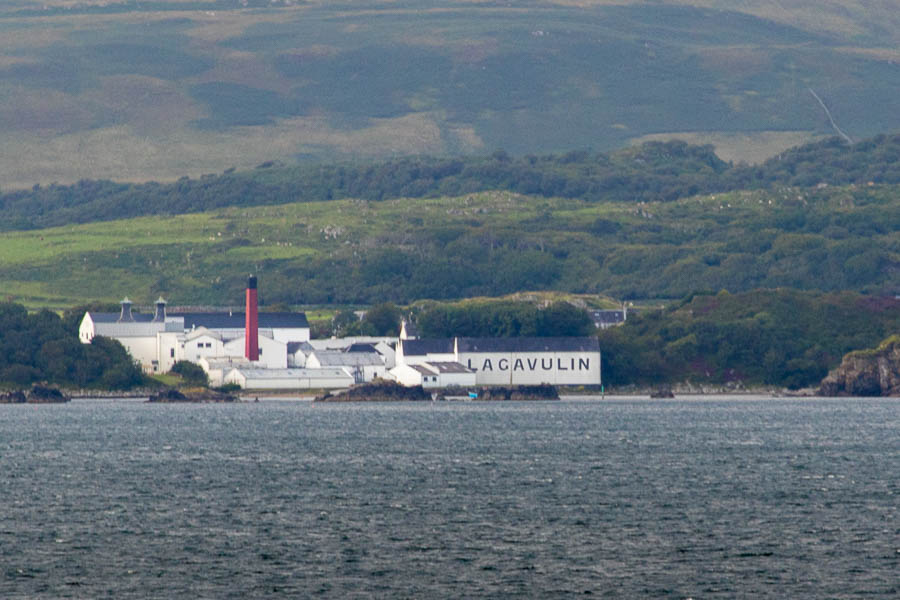
Up close, from the ruins of Dunyvaig Castle, it looks like this:
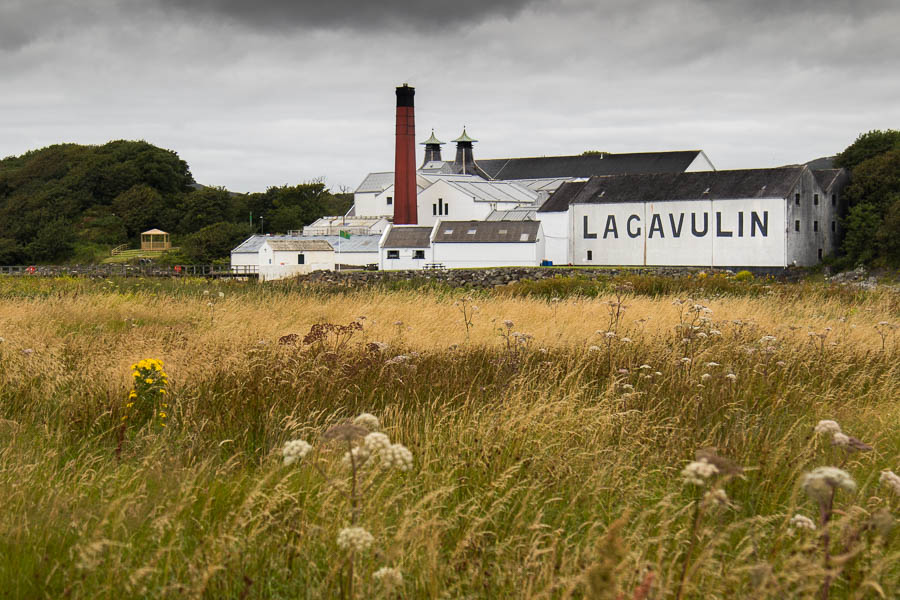
And for comparison between the LG G6 and the Canon 7D mark II, here's the camera-phone photo I took at about the same time:
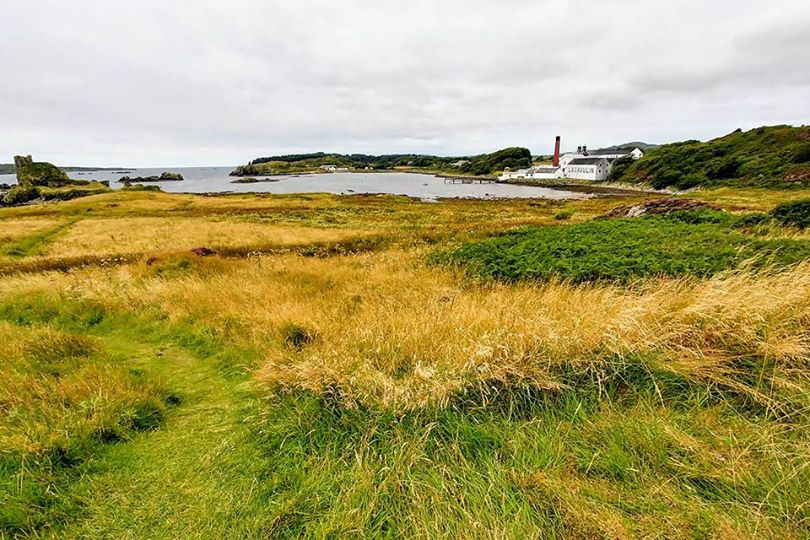
I promised to post photos from Scotland once I had a chance to go through all 800 or so from my 7D, and today, I had a (short) chance.
First: the Scottish National Gallery, Edinburgh, where we had breakfast on August 8th:
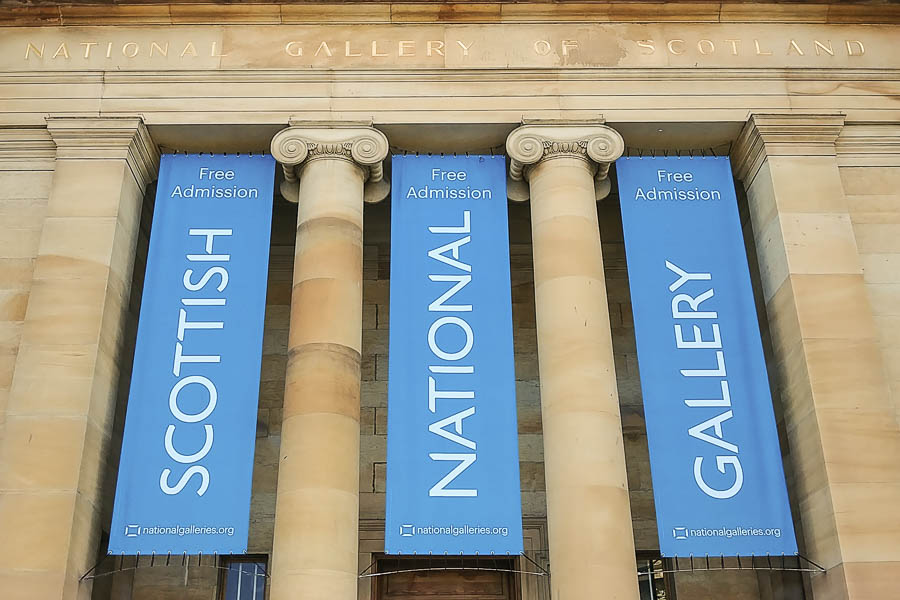
Second, Glenmachrie House, where we stayed:
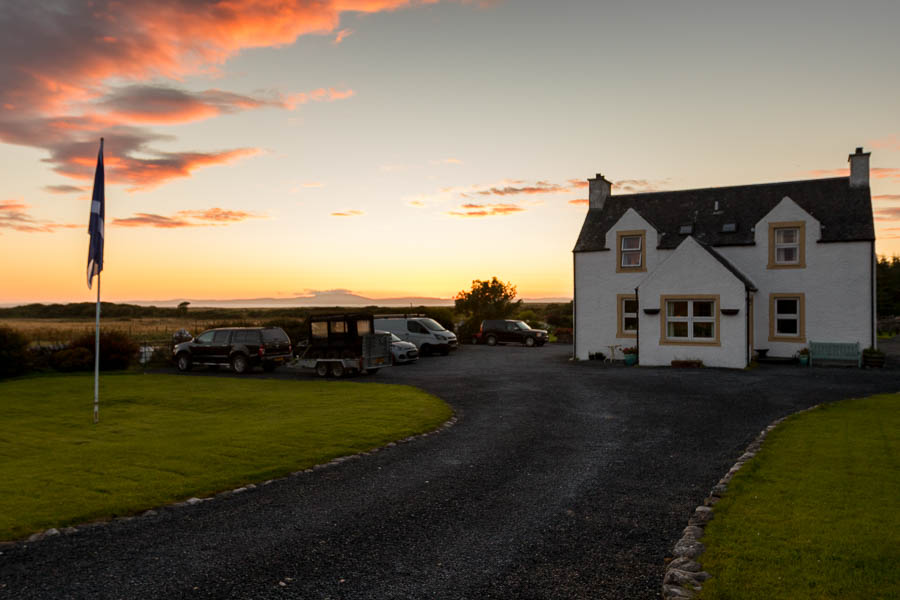
(This is the reverse of the image I posted earlier, about an hour later, and with a real camera and HDR software.)
More tomorrow.
...to your whisky:
[A]dding water releases molecules that improve the flavor. Water and ethanol don’t make for a perfectly uniform mixture. Aromatic compounds could become trapped in ethanol clusters and never reach the surface. Our tongues are only capable of identifying the flavors, sweet, salty, sour, bitter, and umami (savory), so aroma is really important for detecting all the other flavors that connoisseurs appreciate in whiskey.
Guaiacol is what gives whiskey that smoky, spicy, peaty flavor. Chemically, guaiacol is similar to a lot of other whiskey aroma compounds like vanillin (with the scent of vanilla) and limonene (citrus). These and other flavor compounds are not attracted to water and are more likely to become trapped in ethanol clusters.
So, just add a couple of drops to your dram, especially if it's cask-strength. But start with good whisky; diluting crap won't improve it.